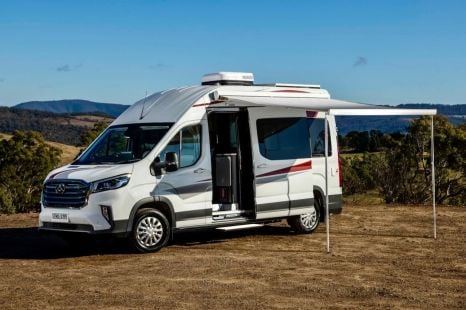

Ben Zachariah
2026 LDV Deliver 9 campervan released with sharp pricing
20 Hours Ago
Here's a first look at the hotly anticipated 2023 Range Rover Sport from our man on the ground at the reveal event.

Contributor
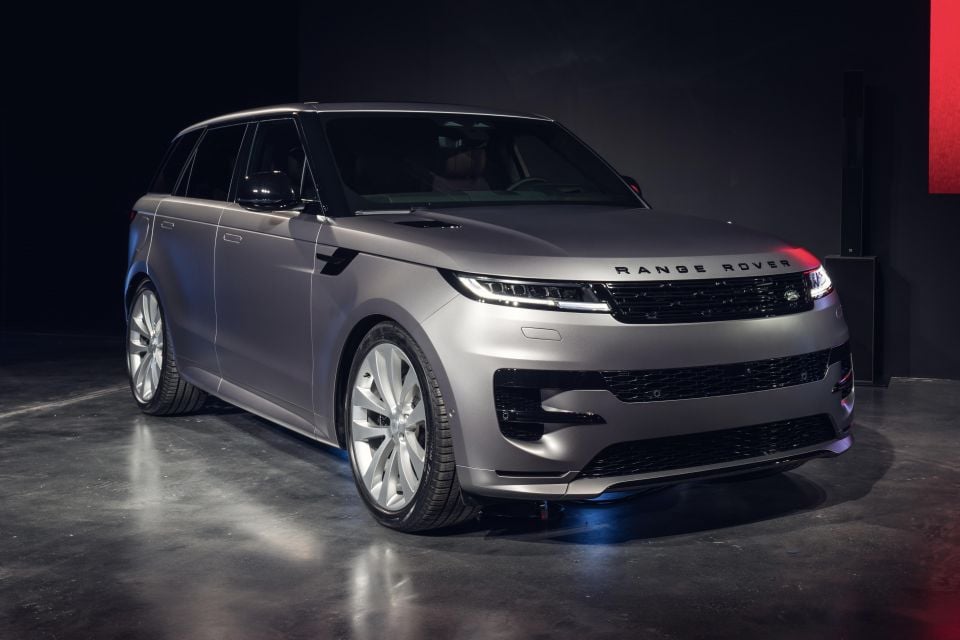

Contributor
The all-new third-generation Range Rover Sport has emerged with the job of overcoming the Mercedes-Benz GLE, Audi Q7 and BMW X5 in the sales race.
The second-gen Range Rover Sport debuted back in 2013 and despite its age, continues to be Jaguar Land Rover’s second-biggest seller in Australia behind the Defender.
In keeping with JLR’s mandate to streamline its fleet to two platforms with hybrid and battery-powered vehicles adopting the EMA architecture, the Range Rover Sport shares the MLA Flex base with the just-released fifth-generation Range Rover.
MORE: 2022 Range Rover review
There’s familiarity between the two as they were designed simultaneously to simplify the manufacturing of both with similar dimensions and styling cues, and most notably the shrink-wrapped look.
The new modular architecture is 35 per cent stiffer despite the Sport being 20mm longer, 20mm wider and almost 20mm taller than its predecessor. Yet the vehicle boasts a wind-cheating drag co-efficient of 0.29 that seems believable when you look at its smooth nose.
New headlights claim to project up to 500 metres of light using new digital LEDs and 1.3 million micro mirrors inside each lens. The lights work in unison with the car’s navigation system and its speed to predict curves ahead to bend around upcoming corners.
Want to know all the specs and Australian details? Read our separate piece called: 2023 Range Rover Sport, everything you need to know
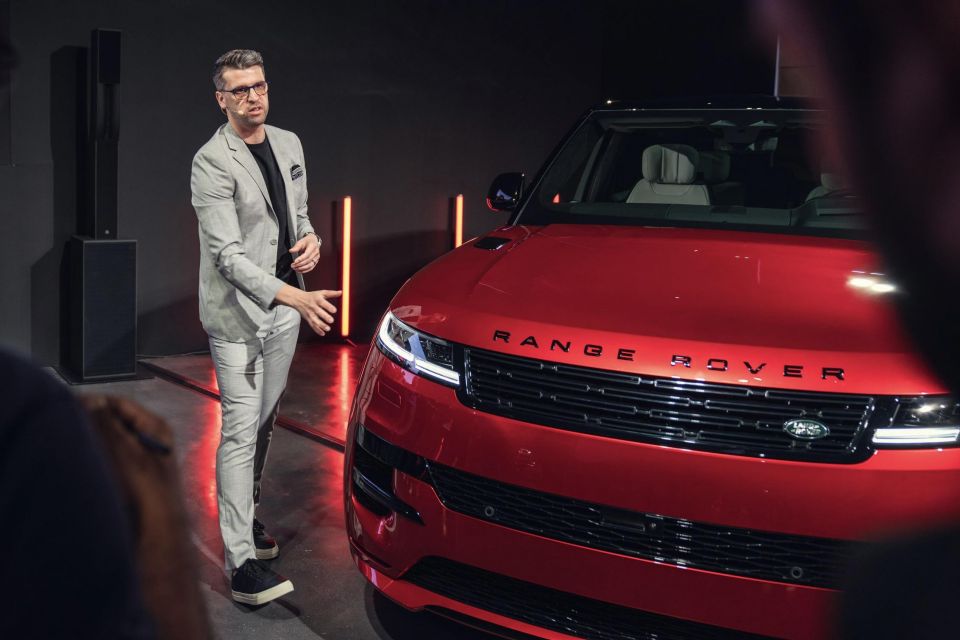
Speaking to CarExpert as he walked me around one of only two Range Rover Sports in existence at the time of writing, Land Rover’s external design manager Robert Battams said:
“The grill and headlight assembly is elongated across the nose to give it a flush look with parking sensors, cameras and other ancillaries all hidden and out of sight.
“The trademark clamshell bonnet gap is half the size of the previous model but it’s that gap which determines the line down the rest of the car, so it has to be absolutely perfect.
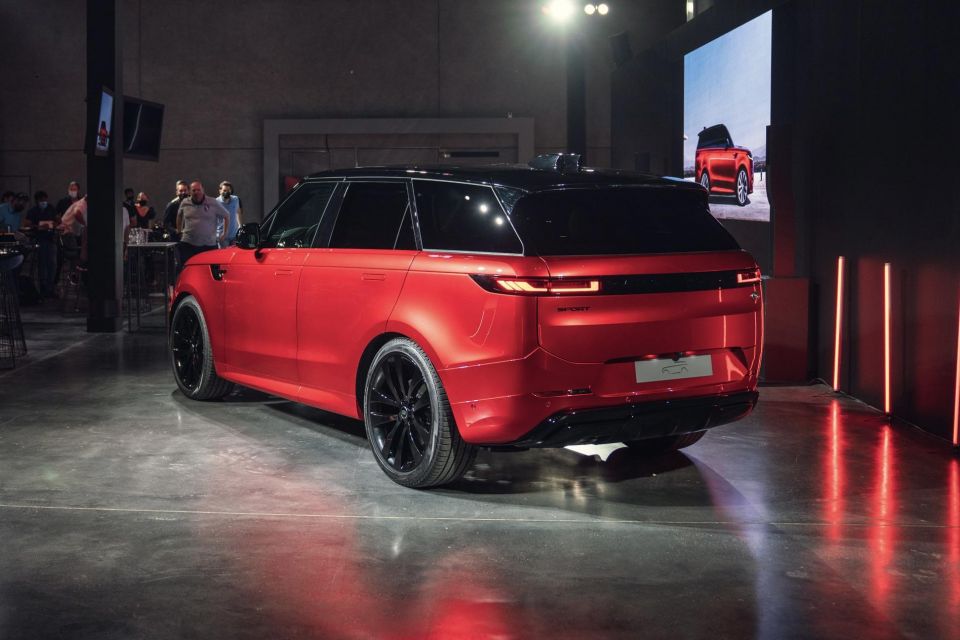
“A high window line and hip line gives it a tight look with taut panels similar to the new Range Rover and there’s barely enough room for your fingernails between the glass and the doors. Just 6mm gives it that really snug appearance,” he said.
The traditional floating roof continues with black pillars supporting a body-coloured top which now extends beyond the rear window giving the profile more of an arrow look than before. High-gloss, black D-pillars blend into the glass to virtually eliminate any sign of window rubbers and gives it a smart, wrap-around look.
The biggest visual differentiator between the Sport and the Range Rover is across the tail with horizontal LED lights that appear almost OLED in definition, adding intensity to the light’s colours and stretching the full width.
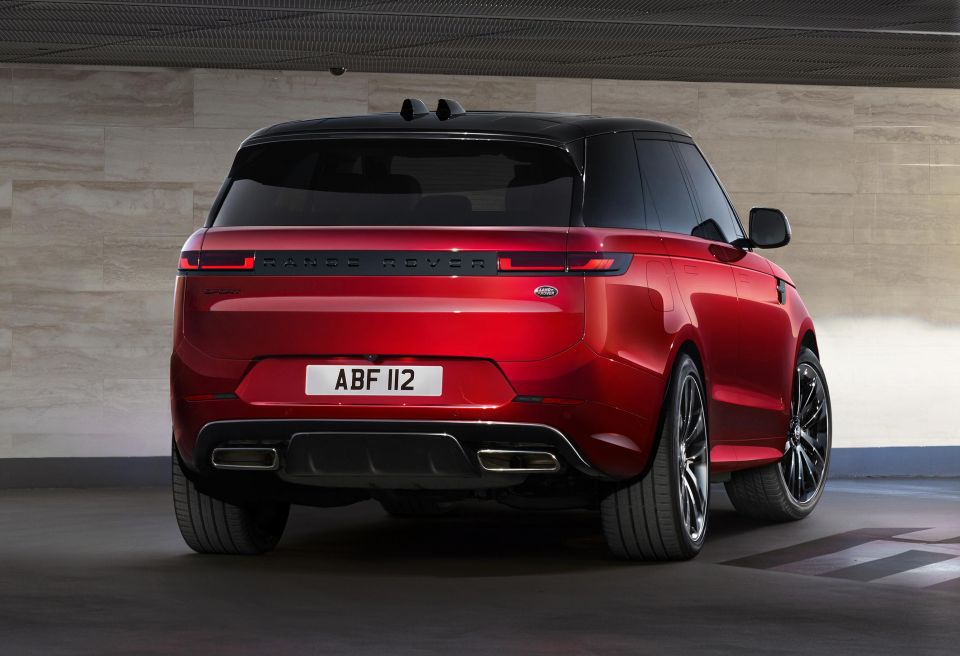
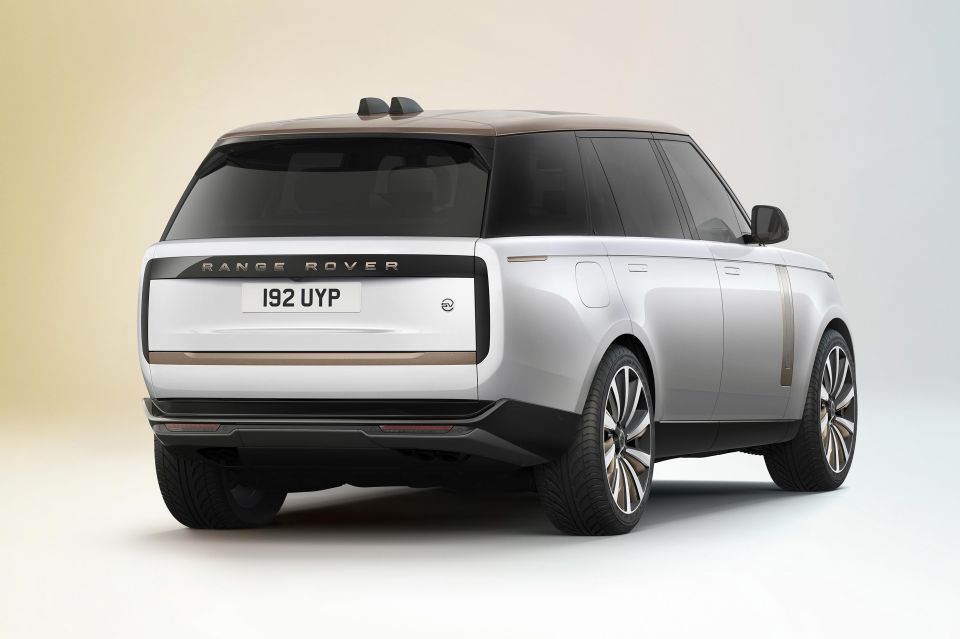
Along with a bumper-mounted number plate that might take some getting used to for the purists, it defines the Sport from the Range Rover’s signature black vertical strips.
The other big differentiator between the two is the single-piece tailgate on the Sport over the two-piece design of the Range Rover that carries over to visually distance it from its big brother.
Wheel options comprise a choice of 20, 21, 22 or 23-inch rims to fill out the guards and Battams notes that even with the 23-inch rims, there’s still half a metre of wheel articulation available and also room for a full-sized spare wheel with inflated tyre, jack and tools under the boot floor and accessible from inside.
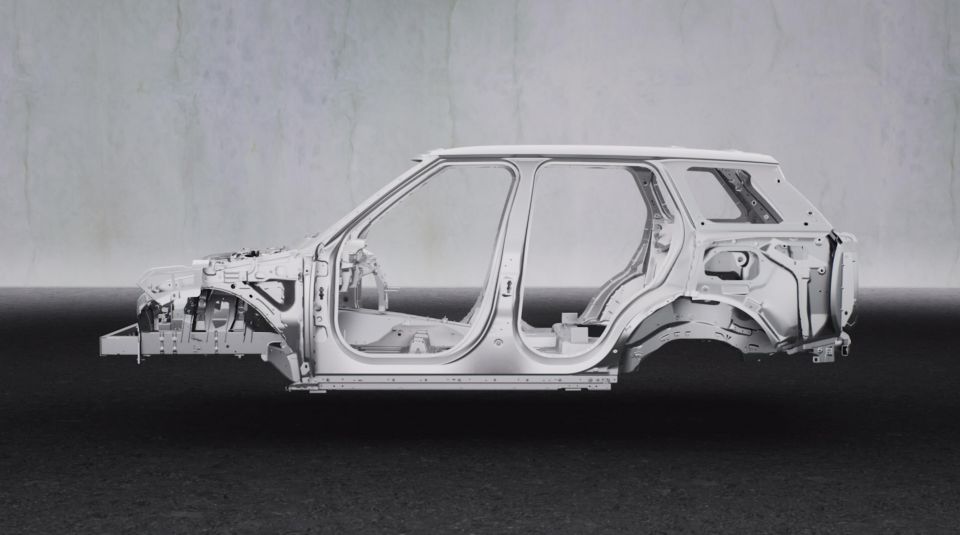
A mix of electrified six-cylinder petrol engines, diesels and the venerable V8 are available under the hood with a fully-electric Range Rover Sport leading Land Rover’s charge into electrification in 2024 as the first of its six-model EV push due by 2026.
The MLA Flex platform has been built to accommodate a floor full of batteries, so the hard work of configuring it for EV use to run the BMW-sourced electric motors has already been done.
For now, there’s the familiar I6 ingenium P360 3.0-litre inline six-cylinder petrol engine plus the P400 which includes a 48-volt, 294kW mild-hybrid unit; and the P510e 375kW and 700Nm plug-in hybrid (PHEV) that’s assisted by a 38kWh battery.

WLTP figures claim 740km of range for this PHEV, of which a much higher-than-average 125km can be run on electricity only, and it should take an 80 per cent DC fast charge in 60 minutes.
The purists and SVR hopefuls can rejoice because I6 diesels comprising the D250, D300 and D350 carry over as does the BMW-derived, 4.4-litre twin-turbo V8, dishing out 390kW, which cracks 100km/h in 4.5 seconds in the P530.
Available in SE, HSE and Autobiography trim specs, the Range Rover Sport will also include a First Edition run to kick off sales for the first 12 months based on the Autobiography D350 with copper highlights in place of the alloy externals, while a Dynamic package will provide the same in gloss black along with a front splitter, black roof and side sills.
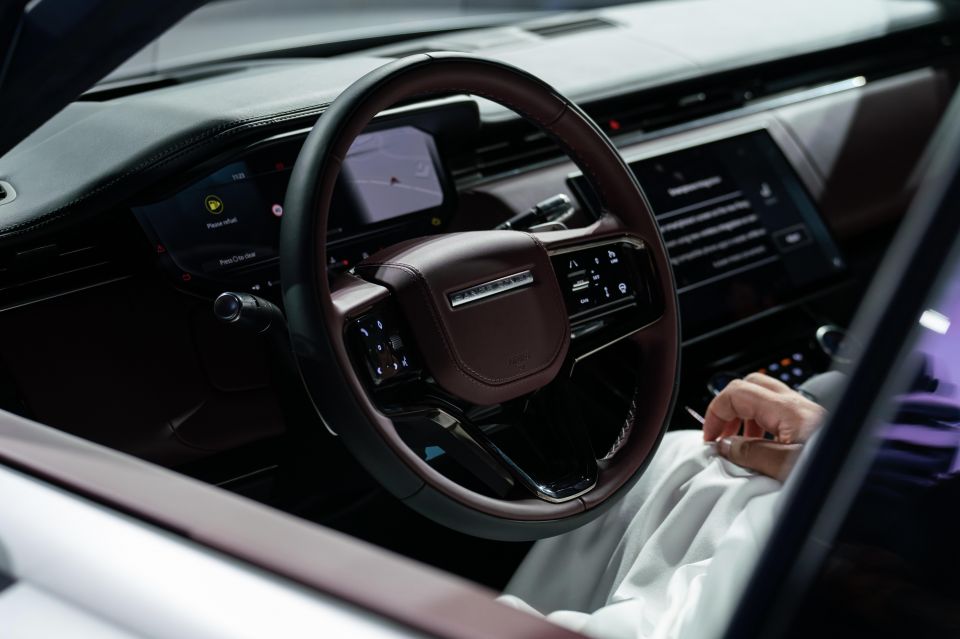
A limited P530 V8 Autobiography will also be available but only via an exclusive online event later this year.
A new Stormer package also debuts on the Sport which includes all-wheel steering that reduces its turning circle to under 11 metres as well as an electronic rear diff and anti-roll dampers that reduce the pitch, by dialling in up to 1400Nm of lateral torque, of which 900Nm can be deployed in 200 milliseconds.
Like the Range Rover and the Defender, the Sport has moved away from the full touchscreen interior, instead mixing a reliable combination of hard-touch dials and switches beneath a curved 13.1-inch touchscreen for the Pivi Pro infotainment system in what is a clean, uncluttered and minimalist interior.

The rotary gear selector that dates back to the first Jaguar XF of 2007 has also made way for a more conventional transmission lever parked between a pair of 22-way, heated and cooled, ventilated front seats covered in either leather or the vegan Kvadrat that combines a wool blend with suede cloth made from 53 recycled plastic bottles.
Over the air updates and voice control are also part of the package as is Alexa, allowing you to turn on the house lights, heating or air-con remotely. A mega 1430W audio system with 29 speakers, including two speakers in each head rest, is available as an option.
MORE: 2023 Range Rover Sport, everything you need to know MORE: 2023 Range Rover Sport spied with less camouflage MORE: 2023 Range Rover Sport reveal set for May 11 MORE: Land Rover plug-in hybrid offensive: Three new PHEVs in 2022 MORE: 2020 Range Rover Sport HSE Review
Where expert car reviews meet expert car buying – CarExpert gives you trusted advice, personalised service and real savings on your next new car.


Ben Zachariah
20 Hours Ago
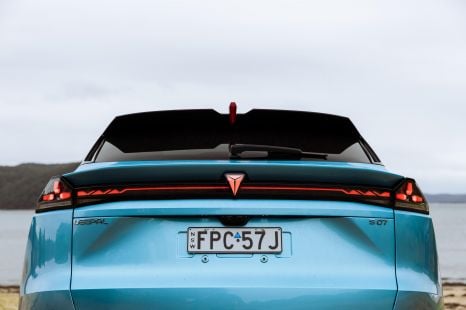

William Stopford
22 Hours Ago
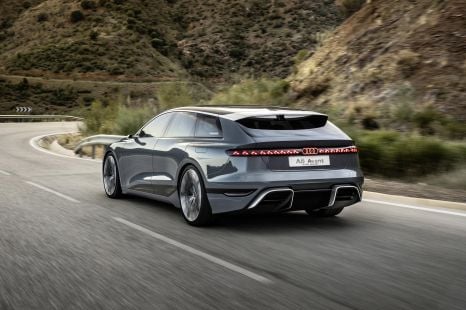

Derek Fung
22 Hours Ago


Alborz Fallah
22 Hours Ago
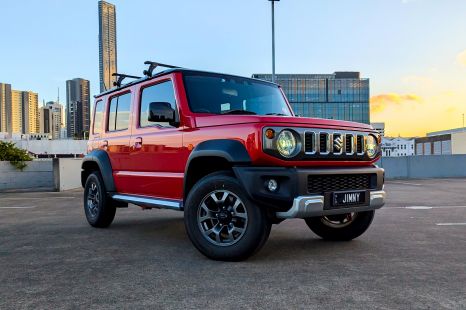

William Stopford
1 Day Ago


Ben Zachariah
2 Days Ago